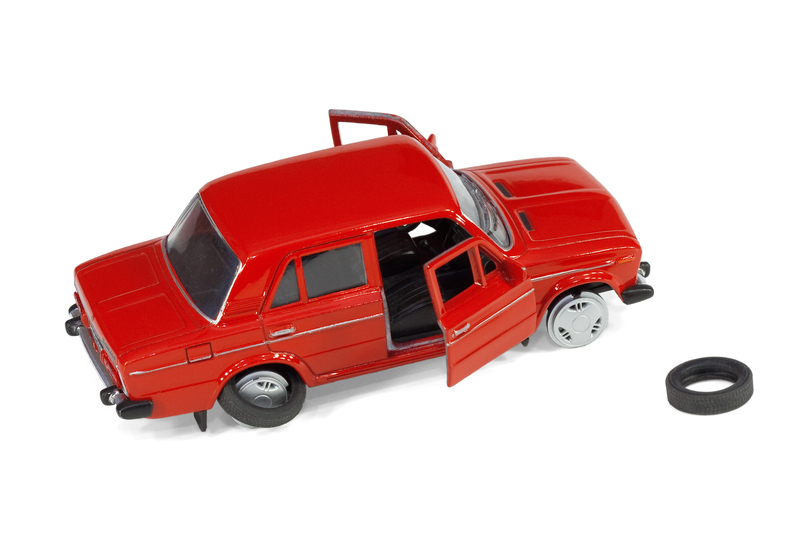Making PPE Waste Disposal Part of Your Environmental Responsibility
As the world continues to adapt to new health and safety standards, the use of personal protective equipment (PPE) has soared. Items such as masks, gloves, gowns, and face shields have become essential in medical, industrial, and everyday environments. While PPE is necessary for protection, PPE waste disposal has emerged as a significant challenge for both organizations and individuals. Integrating proper disposal of PPE waste into your environmental responsibility strategy is not only wise--it's now essential.

Understanding the Scope of PPE Waste
The usage of PPE skyrocketed during the COVID-19 pandemic and continues at elevated levels across various sectors. Hospitals, clinics, retail stores, manufacturing plants, offices, and households now generate unprecedented amounts of PPE waste. According to the World Health Organization (WHO), global medical waste generation has increased remarkably, with an estimated 89 million medical masks and 76 million gloves used each month at pandemic peaks. Unfortunately, a significant portion of this ends up in landfills or the environment, causing ecological harm.
- Face masks are often made from non-biodegradable polypropylene plastic.
- Gloves (latex, nitrile, or vinyl) can take decades to decompose.
- PPE waste is often contaminated, posing health risks and complicating recycling or landfill processes.
- Improper disposal can jeopardize waste workers, wildlife, and water sources.
Therefore, PPE waste management requires urgent attention as a critical environmental responsibility.
The Environmental Impact of Improper PPE Waste Disposal
PPE Waste in Landfills
When PPE, particularly disposable masks and gloves, ends up in landfills, the plastics and synthetic fibers do not biodegrade. Instead, they can persist for hundreds of years, shedding microplastics that contaminate soil and leach into groundwater.
PPE Pollution in Waterways
PPE waste disposal errors mean many items escape into drains, rivers, and oceans. One study estimated that 1.56 billion face masks entered oceans in 2020 alone. These materials threaten marine life through ingestion and entanglement and contribute to the growing microplastic pollution crisis.
Risks to Wildlife and Human Health
- Wildlife can become entangled or ingest PPE waste, leading to injury or death.
- Improperly discarded PPE often carries pathogens, increasing the risk of spread to humans and animals.
Clearly, proper PPE waste management is more than an operational concern--it's a vital factor in protecting environmental and public health.
How to Make PPE Waste Disposal Part of Your Environmental Responsibility
Integrating PPE waste disposal into your sustainability initiatives requires a strategic, multi-step approach. Here's how to take meaningful action:
1. Know Your PPE Waste Stream
Start by evaluating the amount and type of PPE your organization or household uses. Typical PPE waste includes:
- Single-use masks (surgical, N95, etc.)
- Disposable gloves (latex, nitrile, vinyl)
- PPE gowns, aprons, and head covers
- Face shields, goggles, and visors
Conduct a PPE waste audit to track origins, quantities, and points where improper disposal occurs. Awareness is the first key step toward environmental responsibility in PPE waste disposal.
2. Educate Staff and Stakeholders
Education empowers action. Teach staff, visitors, or family members about:
- The environmental impacts of PPE waste
- Correct PPE disposal methods
- The value of reducing, reusing, and recycling where possible
Visual guides, posters, and training sessions can reinforce habits and clarify what goes where.
3. Implement PPE Waste Segregation
Proper segregation is paramount for responsible PPE waste disposal. Use clearly labelled, color-coded bins to separate:
- Non-infectious PPE waste (non-contaminated, can sometimes be recycled)
- Infectious or hazardous PPE waste (requires specialized handling and disposal)
For organizations: designate PPE disposal points near exits, breakrooms, and high-traffic areas to encourage compliance.
4. Partner with Licensed Waste Management Providers
Engage professional, certified waste management services familiar with PPE waste disposal regulations. They ensure PPE waste is:
- Collected safely and reliably
- Transported in accordance with local and federal regulations
- Disposed of using approved incineration, disinfection, or recycling methods
Record-keeping is also crucial for audit trails, especially in regulated industries or when environmental certifications are at stake.
5. Explore PPE Recycling Options
Some companies and innovators now accept certain PPE items for recycling. For example:
- TerraCycle and similar programs recycle disposable masks, gloves, and gowns into raw materials for roads, benches, or new products.
- Certain local projects collect non-hazardous PPE for upcycling or waste-to-energy conversion.
While not all PPE items are currently recyclable, monitoring advancements provides opportunities to divert waste from landfill and bolster your organization's environmental credentials.
6. Choose Environmentally Friendly PPE Wherever Possible
Reduce your environmental footprint by sourcing:
- Reusable, washable masks and gowns
- PPE made from biodegradable or recycled materials
- Products certified for environmental quality and reduced resource usage
Switching to reusable PPE in appropriate settings--such as cloth masks instead of disposables--dramatically reduces waste.
7. Monitor, Measure, and Report
Embed PPE waste management in your sustainability or environmental, social, and governance (ESG) reporting. Track:
- The volume of PPE waste generated vs. recycled vs. landfill/incineration
- Progress against reduction targets
- Success stories and challenges for continual improvement
Transparency builds trust with stakeholders, customers, and regulatory bodies, demonstrating a genuine commitment to environmental responsibility.
Key Regulations Governing PPE Waste Disposal
PPE waste disposal is governed by several local, national, and international regulations. Some of the most relevant include:
- OSHA (Occupational Safety and Health Administration) guidelines for handling contaminated PPE in workplace settings.
- EPA (Environmental Protection Agency) requirements for hazardous waste management.
- WHO and CDC (Centers for Disease Control and Prevention) recommendations for healthcare waste segregation, handling, and transport.
- State-level environmental health agencies, with specific rules around infectious waste and environmental pollution control.
Stay current with regulations in your region, as non-compliance can lead to significant fines, reputational damage, and adverse environmental impacts.
The Role of the Individual in PPE Waste Disposal
While businesses, healthcare providers, and governments shoulder much responsibility, individuals can also contribute to ethical PPE waste disposal:
- Always place used masks, gloves, and other PPE in a closed, lined bin--never in the street, toilet, or nature.
- When possible, cut the ear loops of face masks before disposal to prevent wildlife entanglement.
- Choose reusable or biodegradable PPE and launder as directed to minimize single-use waste.
- Participate in local or national PPE recycling initiatives where available.
- Educate friends and family about the importance of responsible PPE waste management.
Small actions by many individuals make a large cumulative impact, advancing environmental responsibility in your community.
Innovative Solutions for PPE Waste Management
A new wave of innovation addresses the growing challenge of PPE waste:
- Recycling technologies that sterilize and process PPE into construction materials and fuel sources.
- Smart disposal bins that track fill levels and automate waste collection, reducing overflow and contamination risks.
- Biodegradable PPE made from natural fibers like cellulose or corn starch, which break down safely in composting facilities.
- Research into eco-friendly disinfectants allowing more PPE items to be safely reused or recycled.
- Community PPE collection drives that support responsible disposal and educate the public.
Organizations that adopt or support such innovations demonstrate leadership in environmental responsibility and attract sustainability-conscious customers and partners.
Benefits of Making PPE Waste Disposal Part of Your Environmental Responsibility
Embedding PPE waste disposal into your environmental policies delivers a range of benefits:
- Protects the environment by reducing landfill use, marine pollution, and microplastic generation
- Enhances reputation and fosters trust among consumers, partners, and regulators
- Mitigates legal and financial risks associated with waste management non-compliance
- Supports healthier communities by reducing the spread of infectious disease and minimizing wildlife harm
- Positions your organization as a sustainability leader, improving employee satisfaction and competitive advantage
Above all, it aligns your operations and choices with broader global environmental goals, such as those outlined in the United Nations Sustainable Development Goals (SDGs).

Practical Steps for Getting Started
If you are ready to make PPE waste management part of your environmental responsibility, consider the following checklist:
- Assess your current PPE waste output and identify improvement areas
- Set up clearly labelled disposal bins for PPE at key locations
- Form partnerships with reputable waste management providers and recyclers
- Switch to reusable or biodegradable PPE where feasible
- Develop training and communications for staff, customers, or family members
- Track, review, and report on your progress to foster accountability
Remember, even small changes can dramatically reduce your PPE waste footprint and inspire others to follow suit.
Conclusion: A Call to Environmental Action
Making PPE waste disposal part of your environmental responsibility is both a moral and practical imperative for individuals and organizations alike. As PPE use continues to protect public health, its environmental impacts cannot be ignored. By taking a proactive, informed approach--including proper segregation, ethical sourcing, responsible partnerships, and ongoing education--you can significantly reduce the ecological burden of PPE waste.
Now is the time to embed PPE waste management into your sustainability journey and lead by example. The planet--and future generations--depend on the choices we make today.
Remember:
- Responsible PPE waste disposal is a critical pillar of environmental stewardship.
- Every mask, glove, or shield disposed of correctly makes a meaningful difference.
If you'd like guidance on setting up an effective PPE disposal system or need support with staff training, reach out to a professional waste management consultant or your local environmental body. Together, we can build a safer, cleaner, and more sustainable future.